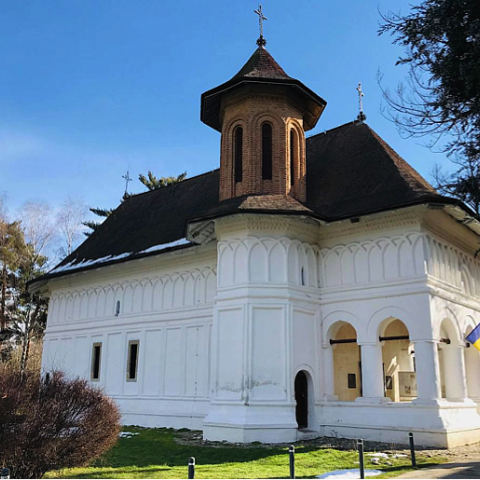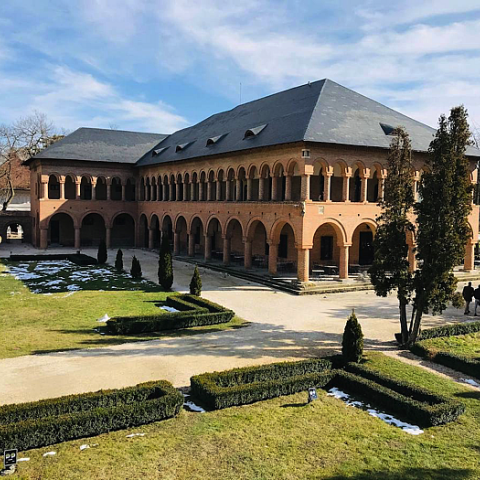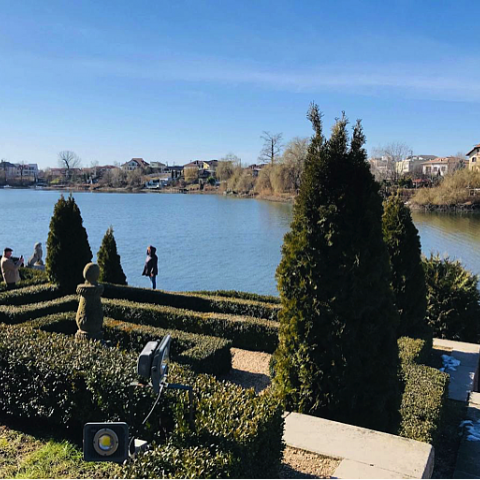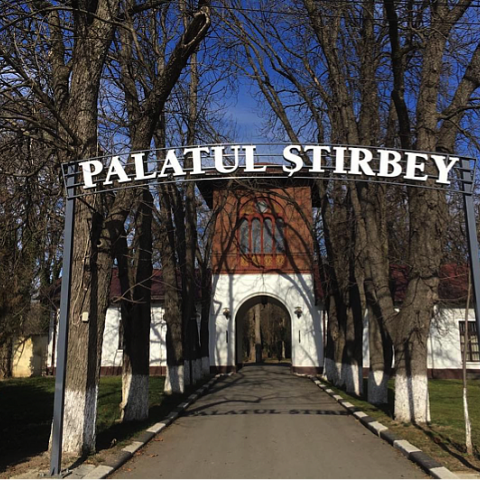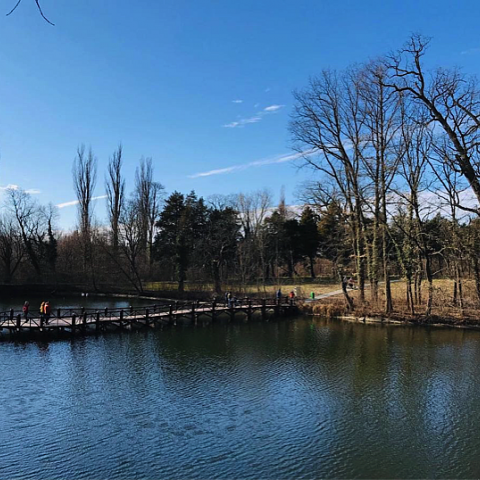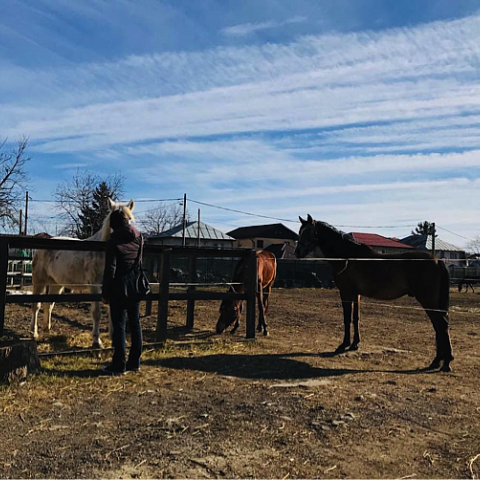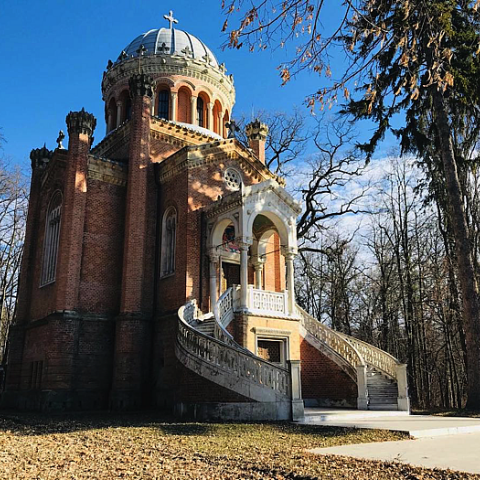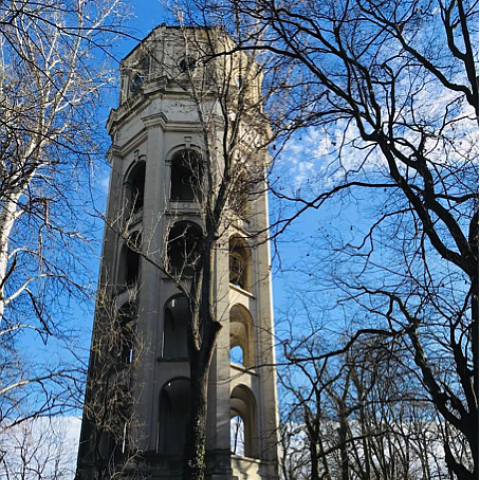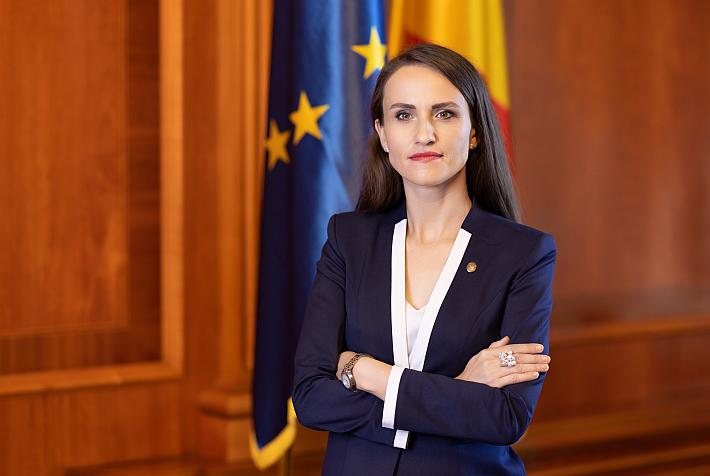“Destination: Bucharest” – Tourist spots close to the Capital city: Mogoșoaia Palace and the Știrbey Domain

The tourist destinations near Bucharest are perfect locations for a weekend getaway. Among them, the Știrbey Domain and the Mogoșoaia Palace. Both are places full of history where visitors can take long walks outdoors, enjoying an entire day in nature with their loved ones.
The Mogoșoaia Palace
About 15 km away Bucharest we find one of the most representative and best preserved constructions of the Brâncovenesc architectural style – the Mogoșoaia Palace. Surrounded by a wonderful park that hosts other tourist sights as well, the palace managed to overcome many of the history’s obstacles so that, today, more than 300 years after its construction was completed, it could share its story with all the curious visitors.
With the sun shining brightly in the sky, winter seems to be coming to an end. However, the temperatures are not very friendly today and the wind intensifies the cold sensation. Therefore, there’s no wonder that the domain is quiet on this February day, only a few visitors enjoying the nature and the beauty of this place. But things are different during the weekend, when many city dwellers chose to spend their time here.
We enter the domain of the Mogoșoaia Palace from the Valea Parcului Street and head towards the Watchtower - one of the main tourist attractions of this place.
Just before passing under the Watchtower, outside the palace walls, we spot the “Sfântul Gheorghe” Church on the left. Founded by prince Constantin Brâncoveanu and completed in 1688, the small church houses today the tomb of George-Valentin Bibescu, an extraordinary pilot who contributed to the development of the Romanian military aviation. We can hear from outside the prayers of this morning's service, so we stop for a few moments, in silence.
As soon as we walk past the Watchtower, the famous Mogoșoaia Palace appears, with its noble charm that immediately attracts our attention. In addition, the mix between the buildings’ red and the park’s green gives this place a special feeling. And, as the trees’ branches are still empty on this winter day and the flowers have not yet revealed their colorful petals, we can only imagine that nature’s show is even more amazing as the weather warms.
The palace was realised at the will of Constantin Brâncoveanu, prince of Wallachia, and was completed in 1702. Built in the Brâncovenesc architectural style, a style that was previously used at another palace of the prince built at Potlogi, the palace from Mogoșoaia combines Venetian and Oriental elements.
But Constantin Brâncoveanu enjoyed this palace for only a few years, as he was executed in Constantinople in August 1714, together with his sons. His entire fortune was confiscated by the Ottomans and the building was transformed into a inn. Later on, prince Șerban Cantacuzino redeemed the palace, handing it back to Brâncoveanu's heirs.
The building was damaged several times in the following years, eventually passing into the possession of the Bibescu family. Then, between 1860-1880, the palace was renovated by Nicolae Bibescu, who also built the family vault and the Elchingen Villa. After 1890, French architects also built the greenhouses of Mogoșoaia - another tourist attraction of this location.
The palace then came into the possession of Martha Bibescu, an exceptional writer who renovated and restored the building, saving this architectural jewel from ruin. The palace also had many notable guests during this period, such as Charles de Gaulle, King Carol I of Romania, Queen Marie of Romania, King Ferdinand I of Romania or Winston Churchill.
The Bibescu family lost the palace after the communist regime was installed. However, Martha Bibescu managed to have the palace classified as historical monument, giving it protection for the future. The palace was devastated, however, and art collections were stolen. Starting 1957, it served as the headquarters of the feudal section of the National Museum of Art, being restored beginning 1977.
Today, the Mogoșoaia Palace houses the Aulic Tradition Museum (a donation of Liana and Dan Nasta), an art collection that we also discover within a tour of about an hour. Each room of the museum introduces us to a different world, presenting us, besides the history of the palace and the Brâncoveanu family, French, Italian or Ottoman-inspired art objects, including some that are hundreds of years old.
The palace, as well as the entire domain, host many events throughout the year. We discover today a surprising painting exhibition on the ground floor of the building, signed by two Romanian artists. We pass from room to room in silence, looking at the artworks full of vivid colors, mixed and combined in different and complex forms.
Outside, we face the cold winter air again, but only for a few moments: we immediately enter the basement of the palace, which today houses an impressive collection of frescoes saved from the Văcărești Monastery - an architectural ensemble built almost 300 years ago in the Brâncovenesc style and demolished in 1986 by the order of former communist dictator Nicolae Ceaușescu. The atmosphere of this place full of history overwhelms us, so we spend the next few minutes in silence. Near us, two other visitors talk in a low voice about the history of these frescoes.
We spend the rest of our visit outside, strolling through the park surrounding the palace, accompanied by the birds’ song. We discover the rear facade of the palace, which faces the lake, where there’s a beautiful loggia of Venetian inspiration. We descend the steps to the lake for a few pictures and we soon notice that a couple nearby is doing the same thing. The two laugh while trying to take a selfie, despite the cold wind that forces them to tighten their scarves around their necks.
Back to the front side of the palace, we stop to take some pictures of the other representative buildings of this complex built in Brâncovenesc style – the cuhnia (the old kitchens) built between 1681 and 1702 and the guest house (which today houses a restaurant), built by Nicolae G. Bibescu in 1870 on the site of a 17th century manor.
Next we stop at the greenhouses and at the Bibescu family vault where princes Mihai and George Basarab-Brâncoveanu are also buried.
The Mogoșoaia Palace hosts exhibitions, concerts or theater performances throughout the year, attracting many visitors and locals, especially at the end of the week. On summer days, many enjoy picnics in the park's meadows, read books on the grass, play badminton or volleyball, or simply enjoy family walks in nature. Thus, we also plan to return when the temperatures are higher, with a blanket and our favorite books in the backpack.
The Știrbey Domain
The sun is spoiling us today too so we decide to spend another day outdoors, in yet another special location close to Bucharest - the Știrbey Domain. It’s just after 11 AM when we arrive in Buftea, the small town near the Capital also known for the movie studios located here.
The Știrbey Domain, although not as popular as the Mogoșoaia Palace, which is about 10 km away, is an equally suitable location for outdoor walks, with an equally interesting story. We spot it easily, it is hard to miss, with its huge lettered name and the statue of Queen Maria at the entrance – she was one of the important guests of the place.
The domain includes several impressive tourist attractions and the most important is, of course, the Știrbey Palace. We find it after a short walk on the sunny alleys of the park, passing under the high crowns of the secular trees, which give a romantic touch to this place. We decide, on the spot, to return here in a warmer month, for a family picnic.
The story of the Știrbey Palace begins 170 years ago, in 1850, when Barbu Dimitrie Știrbey, prince of Wallachia, started the construction of the building. The ruler's successors extended the palace in the following years, the construction being completed by Alexandru Știrbey, son of Barbu Știrbey, in 1863. The palace was restored in 1958-1959 based on the project of architects Robert Voll and Agripa Popescu.
In 1916, during the World War I, Queen Marie lived here with her children.
We also enter the palace, attracted by the elegance of the white building. We are greeted by one of the employees of the restaurant operating inside the Știrbey Palace, which confirms that the palace can be visited. The ground floor of the building preserves the old atmosphere, with vintage furniture, high doors made of solid oak wood and classic but complex decorations. And the dim light comes to complement the romantic, relaxing atmosphere of this special place.
Dark wood stairs lead to the first floor, where other rooms of the palace have been carefully arranged and decorated: the ceilings are covered with wood and we even find an old fireplace in one of the rooms, which apparently is still used occasionally. It’s quiet up here today, so we spend several minutes here, trying to capture this place’s feeling in our photos.
Back outside, we immediately spot the informative sign directing us to the next attraction of this domain: the Holy Trinity Chapel. We follow the alley that leads to the artificial lake and stop for a few minutes for photos with the colorful swings installed on the shore. We then cross the wooden bridge (which, as we find out, was not part of the initial plan, being built over the lake a few years ago for a film shooting) and follow the path that leads to the chapel.
Built between 1871-1890, the chapel is truly impressive. Constructed in the neo-Gothic style based on the project of architect Theophil von Hansen, the family chapel immediately attracts our attention with its red brick façade, its decorations in neoclassical style and its symmetrical staircases made of white Carrara marble. In addition, the chapel also has historical value, housing the tombs of prince Barbu Dimitrie Știrbey, prince Barbu Alexandru Știrbey and their relatives.
We are not allowed inside, but even so, we are truly impressed by this building. And the group of tourists coming to the chapel seems to be just as interested in the story of this special place: most are looking at the construction through the lens of their cameras while the guide presents the history and important details.
After a few minutes of walking on a paved path crossing the domain’s small forest, we reach the third tourist attraction of the park: the water tower. Built in the 1920s following the projects of architect Anghel Saligny, this construction had a special role, being used to store the water needed for the Știrbey family’s domain. Of course, we also stop at this interesting construction of reinforced concrete, for a new round of photos.
We then follow the same alley, which takes us back to the palace. We don’t stop here, however, and we soon notice, not very far away, a fat, brown pony that tries to get a carrot from a child. We get curious so we head there and find a large area where, closed separate spaces, a pony and several horses enjoy the attention of visitors. We also approach the gentle animals and carefully caress one of the horses - a perfect ending to the last day of the weekend.
Useful information:
The Mogoșoaia Palace is located at some 15 km from Bucharest. You can get here both by car, following the national road DN1A, and with the STB (Bucharest’s public transport company) buses serving regional lines R436 and R474.
The palace is open to the public from Tuesday to Sunday between 09:00 and 17:00 (October-April) and between 10:00 and 18:00 (May-September).
The ticket for visiting the Aulic Tradition Museum in Mogoșoaia Palace costs RON 6 per person and the visitors who want to take pictures inside must pay an extra fee of RON 20. Those who also want a guide have to pay RON 4 (for a guided tour in Romanian) or RON 6 (for a guided tour in English, French or Italian).
Dogs are allowed in the domain’s park.
The Mogoșoaia domain is scene for many cultural and entertainment events, such as painting exhibitions, book fairs or concerts. For example, the painting exhibition of Ioana Antoniu and Radu Pulbere is open to the public until March 3, the exhibition "Persistence of Light on the Retina" by artist Alice Țeca can also be visited until March 3, and the music festival Fall in Love will return with a new edition between September 4 and September 6.
The Știrbey Domain is less than 10 km from Mogoșoaia Palace and about 25 km from Bucharest, in the town of Buftea. From Bucharest, you can get here by car following the national road DN1A, by train to Buftea station or with the buses R436 and R469.
The Știrbey Domain is open to the public at the end of the week (Friday-Sunday), and admission is free. The domain also has a parking lot; dogs are allowed in the park.
The biggest event organized on the Știrbey Domain is the Summer Well music festival, which this year is scheduled for August 7-9.
Both locations can also host private events such as weddings or anniversaries.
This material is part of a project under the program of promoting the touristic heritage "Destination: Bucharest", carried out by the Bucharest City Hall through the Public Monuments and Touristic Heritage Administration (AMPT).
Photos by Romania-Insider.com for AMPT.








